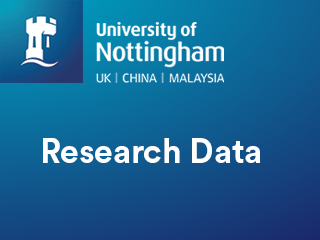Contamination of detained sediment in Sustainable Urban Drainage Systems
| dc.contributor.author | Arthur, Scott | |
| dc.contributor.other | Allen, Deonie | |
| dc.contributor.other | Haynes, Heather | |
| dc.coverage.spatial | Newcastle Great Park, Newcastle, UK; J4M8 Distribution Centre, Bathgate, Scotland, UK. | en_UK |
| dc.coverage.temporal | January 2014 and July 2015 | en_UK |
| dc.date.accessioned | 2017-05-31T16:32:35Z | |
| dc.date.available | 2017-05-31T16:32:35Z | |
| dc.date.issued | 2017-05-31 | |
| dc.identifier.uri | https://rdmc.nottingham.ac.uk/handle/internal/321 | |
| dc.description.abstract | Adsorption is a key water pollution remediation measure used to achieve stormwater quality improvement in Sustainable urban Drainage Systems (SuDS). The level of contamination of detained sediment within SuDS assets is not well documented, with published investigations limited to specific contaminant occurrence in ponds, wetlands or infiltration devices (bioretention cells) and generally focused on solute or suspended sediment. Guidance on contamination threshold levels and potential deposited sediment contamination information is not included in current UK SuDS design or maintenance guidance, primarily due to a lack of evidence and understanding. There is a need to understand possible deposited sediment contamination levels in SuDS, specifically in relation to sediment removal maintenance activities and potential impact on receiving waterways of conveyed sediment. Thus, the objective of the research presented herein was to identify what major elements and trace metals were observable in (the investigated) SuDS assets detained sediment, the concentration of these major elements and trace metals and whether they met/surpassed ecotoxicity or contaminated land thresholds. The research presented here provides evidence of investigated SuDS sediment major element and trace metal levels to help inform guidance and maintenance needs, and presents a new methodology to identify the general cause (anthropocentric land use) and extent of detained SuDS fine urban sediment contamination through use of a contamination matrix. | en_UK |
| dc.language.iso | en | en_UK |
| dc.publisher | The University of Nottingham / Heriot-Watt University | en_UK |
| dc.subject.lcsh | Urban runoff -- Environmental aspects | en_UK |
| dc.subject.lcsh | Contaminated sediments – Research | en_UK |
| dc.subject.lcsh | Contaminated sediments – Management | en_UK |
| dc.subject.lcsh | Sediment transport – Research | en_UK |
| dc.subject.lcsh | Sustainable engineering – Research | en_UK |
| dc.subject.lcsh | Sustainable urban development | en_UK |
| dc.title | Contamination of detained sediment in Sustainable Urban Drainage Systems | en_UK |
| dc.identifier.doi | http://doi.org/10.17639/nott.317 | |
| dc.subject.free | Contamination factor; Geoaccumulation index; Sediment contamination; SuDS; Urban contamination; Sustainable Drainage Systems | en_UK |
| dc.subject.jacs | Engineering::Civil engineering::Environmental engineering | en_UK |
| dc.subject.lc | G Geography. Anthropology. Recreation::GE Environmental Sciences | en_UK |
| dc.date.collection | Between January 2014 and July 2015 | en_UK |
| dc.coverage.coordinates | 45°26′51″N 122°17′18″W to 45°26′39″N 122°38′36″W | en_UK |
| uon.division | University of Nottingham, UK Campus::Faculty of Social Sciences::School of Geography | en_UK |
| uon.funder.controlled | Engineering & Physical Sciences Research Council | en_UK |
| uon.datatype | Physical sample analytical results (pond sediment) | en_UK |
| uon.grant | EP/K013661/1 | en_UK |
| uon.grant | EP/P003982/1 | en_UK |
| uon.parentproject | Blue-Green Cities Research Project; Urban Flood Resilience Research Project | en_UK |
| uon.collectionmethod | Detailed methods are presented in the research paper. In summary, physical sediment sample collected from Sustainable Urban Drainage Systems were processed for urban contaminant, deposition and particle size distribution analysis. | en_UK |
| uon.rightscontact | Heriot-Watt University | en_UK |
| uon.preservation.rarelyaccessed | true | |
| dc.relation.doi | 10.3390/w9050355 | en_UK |
Files in this item
This item appears in the following Collection(s)
-
Public Research Data
A collection of research data, held in this repository, that is publicly available, except where individual embargoes apply

